Tips & Tricks
There are things every Graffiti Buster needs to know – read below to avoid the pitfalls awaiting the beginner!
Tips and Tricks every Graffiti Buster should know about.
Important general tips
Golden Tip # 1
Remove ALL not SOME graffiti .
Graffiti is like rubbish. If there is some, more collects. You MUST remove all of it in order to minimise the likelihood of it returning.
Personal Safety Tip – Dress
Dress properly,
Wear glasses, gloves, proper shoes and Hi-Viz shirt. If you get liquid in your eyes wash it out immediately.
Personal Safety Tip – Pressure Cleaners
Pressure cleaner safety
Wear glasses and make sure those nearby are also wearing glasses. When starting the cleaner, make sure the pressure gun is NOT facing upwards towards someone.
Avoid disasters with cleaning liquid.
Don't use cleaning liquid near cars
It’s caustic and will ruin duco and plastic. Cover any nearby cars. Never use a pressure cleaner and graffiti cleaning liquid near cars. It could splatter.
Golden Tip #2
Remove new graffiti Immediately
Remove NEW graffiti as soon as it re-appears.
Not only is it easier to remove but it will give the vandals no satisfaction.
Personal Safety Tip – Ladders
Ladder safety
Care must be taken if cleaning above head height. If you use a ladder or boxes, always have a second person holding the ladder. NHW Insurance MAY NOT cover you in the event of an accident.
Avoid disasters with painting
Cover property and pavements.
Put down ground sheets and cover nearby property. Always clean up afterwards leaving everything in good condition.
Be responsible
Take dirty water and rubbish away
Please don’t pour dirty water which might contain cleaning liquid and paint down the drains or on grass verges etc. This is irresponsible. If you were seen doing this, you might be reported and this would damage our good name.
Techniques- Using Graffiti Cleaning Liquid
Council supplied Graffiti Kit

The Graffiti Kit
The kit is available free to residents of Bayside from Bayside Council. Check your local Council if you’re not in Bayside.
The kit contains the paint removal liquid, brush, safety mask, glasses, gloves and more.
Use on unpainted brick walls
This is the best surface for use of the liquid. You ger a best result if you use it with a pressure cleaner. See below for techniques
Use on painted brick walls
The liquid is caustic and will remove the paint as well as the graffiti. Be careful.
Use on garage doors
Only use on ANODISED surfaces where the paint on the door is fixed. Sometimes it’s hard to tell if it’s anodised or painted. Always test in small area just in case.
Use on timber fences
Rarely successful as graffiti seeps into the grain. It’s unlikely even with the use of a pressure cleaner that you will get a perfect job. The best result is to paint or sand the fence.
Use on concrete walls
Often difficult to get good result. If the concrete wall has been sealed or painted, it will leave a big blotch. Test first. Possibly painting a better option.
Use on aluminium or galvanised surfaces
It will corrode the surface. The end result will be a blotch where the graffiti was placed. This maybe ok in a tatty back lane but no good on a visible door. Best results are to paint.
Techniques

Unpainted brickwork
Have lots of water available. Best results will be achieved using pressure cleaner in conjunction with the liquid.
First wet the surface, then rub liquid in with brush. Keep rubbing – leave for a few seconds- scour with wire brush, wash off or use pressure cleaner.

Garage doors.
Only use liquid on ANODISED doors. Beware, sometimes painted doors can look as if they are anodised. If it’s painted, the liquid will remove the paint as well as the graffiti.
Suggest ALWAYS test in a small corner. Be 100% sure before using the liquid.

Utilities & Power Poles
Utility Boxes when new are anodised so the cleaning liquid works well. Unfortunately, many have been painted and so the cleaning liquid removes both the graffiti and the paint. You will need to paint. Use appropriate colours.
Power Poles – Paint rather than use liquid

Timber Fences
It’s difficult to get a good result using the cleaning liquid as the paint usually seeps into the grain. Best results are with a pressure cleaner. Technique is the same as with brickwork.
Best result is to paint the fence. Sanding is another option but takes time and energy!

Concrete Walls
Beware, concrete walls are often painted with a sealer coat.
If you apply the cleaner it will remove both the graffiti and the sealer leaving an ugly blotch.
Your only solution is to paint to a line and edge.

Aluminium or galvanised surfaces
The cleaning liquid will damage the surface and leave an ugly blotch as in the photo.
The best option on these surfaces is to paint.
Often aluminium doors or galvanised fences are found in back lanes so this may not be a problem.
